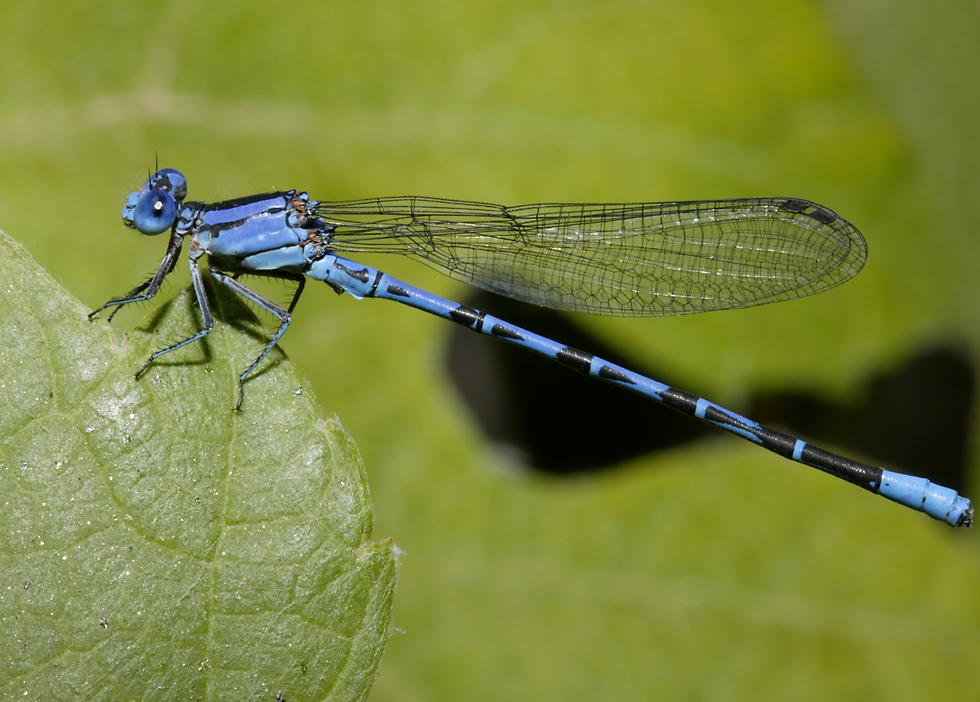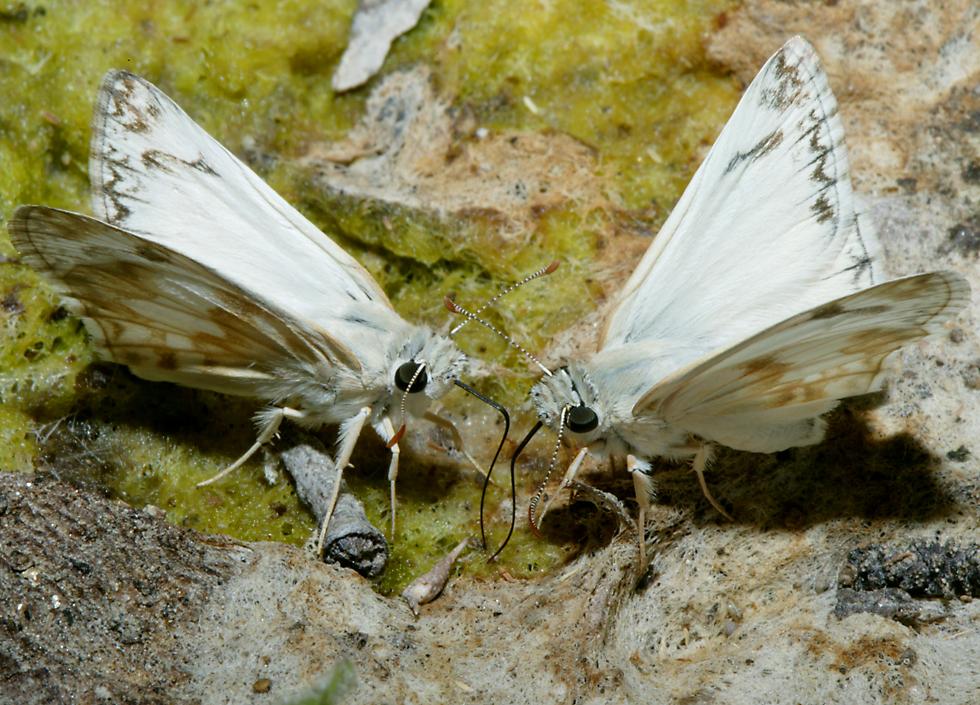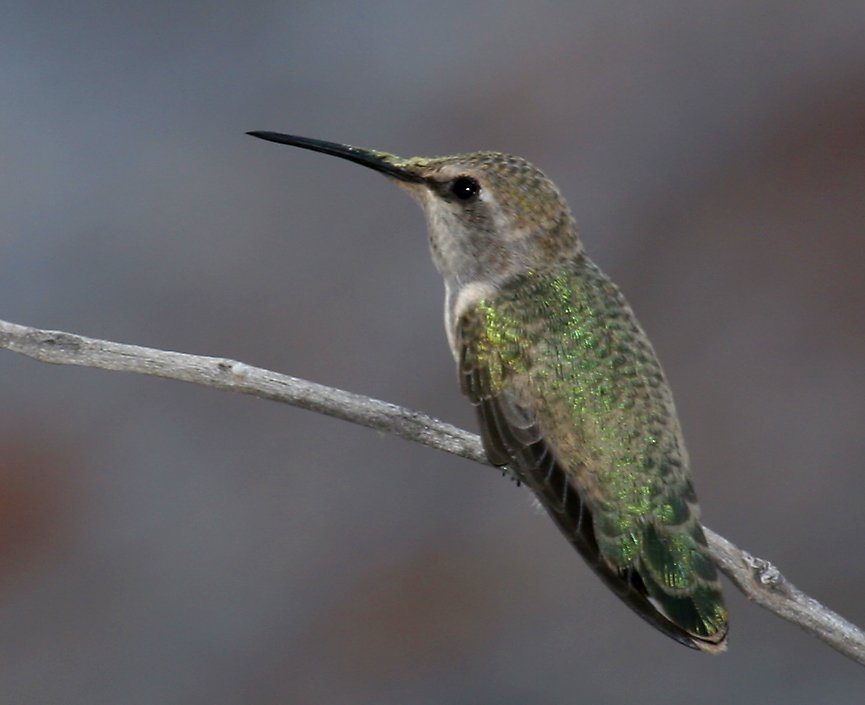Tahquitz Canyon
|
That hot weather suits local reptiles like this granite spiny lizard just fine, though even they go undercover when it gets too warm. |
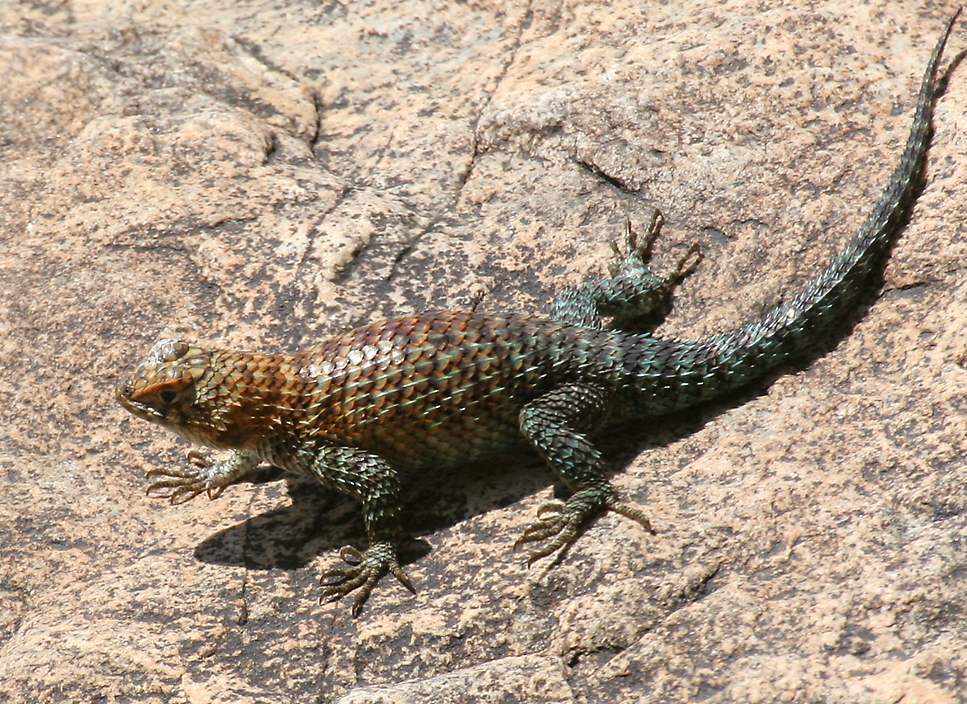 |

The same type of lizard from a different angle. The green coloring on the females and juveniles of this species is really attractive, contrasting nicely with the rich brown on the front of their bodies. |
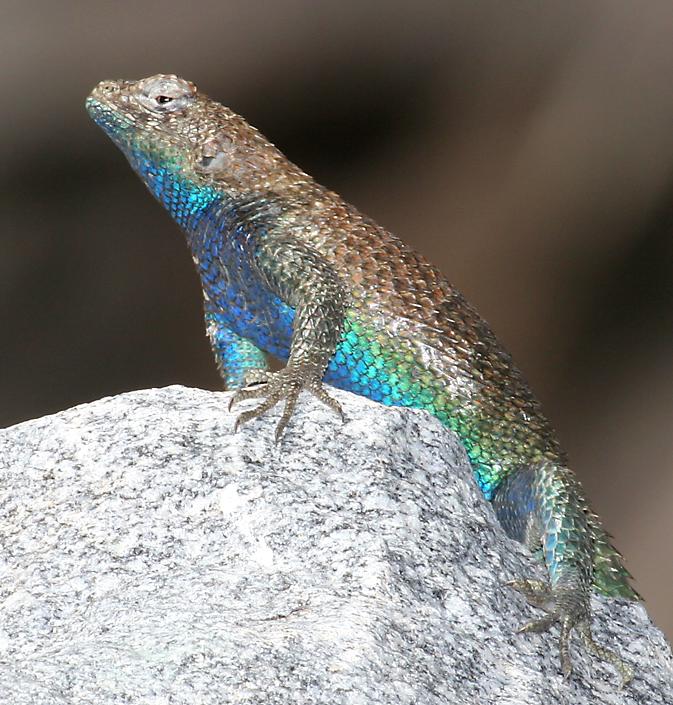
Males are even more spectacular, with brilliant deep metallic blue scales across their entire underside. The canyon is fairly close to the northern edge of their range, but they can be found all the way down into Baja California. |
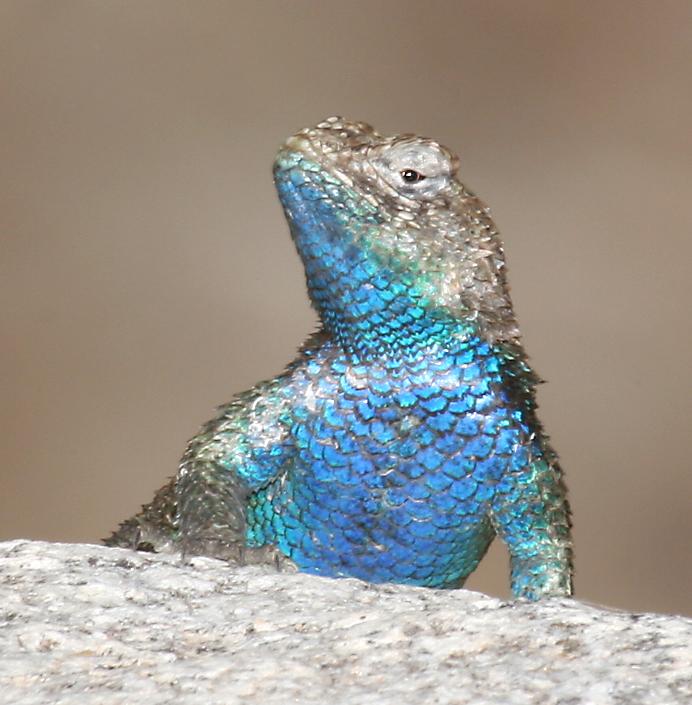
The males are strongly territorial, so it's no surprise that this one started doing the usual iguanid threat display, consisting of rapid and repeated press-ups, followed by a rapid and cowardly retreat over the large boulders along the canyon bottom to a new spot where he repeated the display. Mind you, it's said that this species is inclined to bite people who pick it up, so perhaps the display isn't all bluff after all. Even though I stalked him carefully, I wasn't able to get within 30 feet of this little guy, so I had to take these photos with a very long lens. |
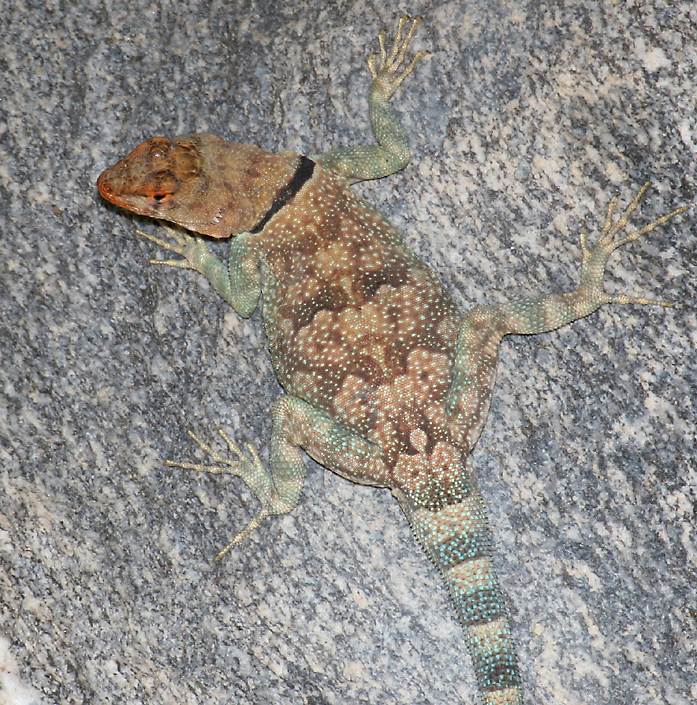
This banded rock lizard is another fairly large lizard which makes its home in the canyon. This one was using its incredibly long claws to hang onto a vertical wall, but since it was in deep shadow I had to use flash to get the photo. It was much easier to get photos of this lizard than the spiny lizards, I was able to inch slowly towards it until I was close enough to reach out and touch it. |
|
The orange markings around its head indicate that this is a gravid female, which means that it's carrying eggs. You can see more of the lizards and snakes that live in this area on the Reptiles of the Coachella Valley page. |
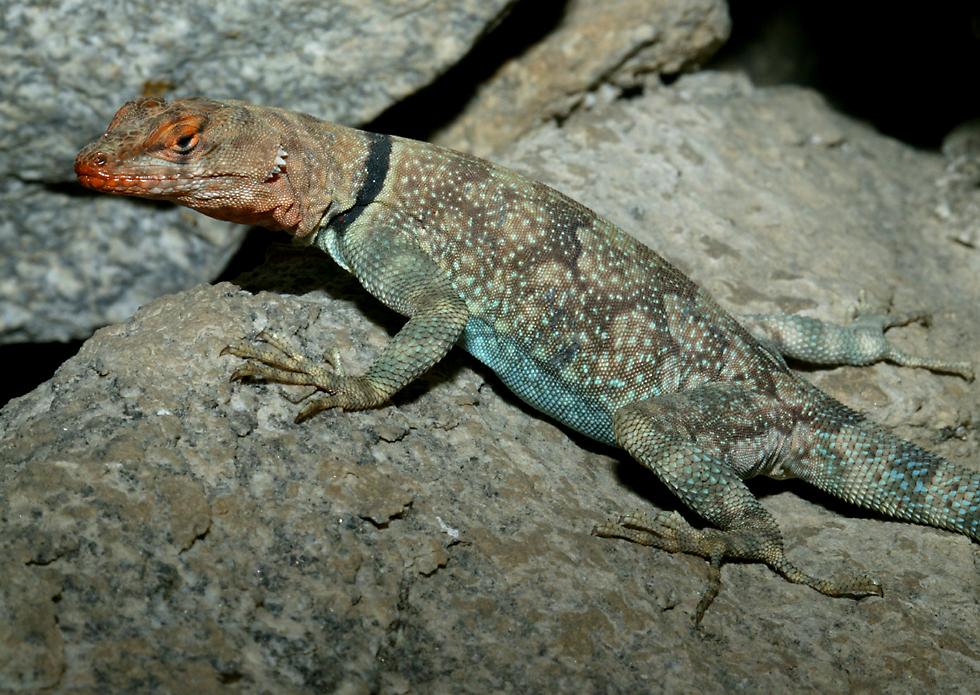 |
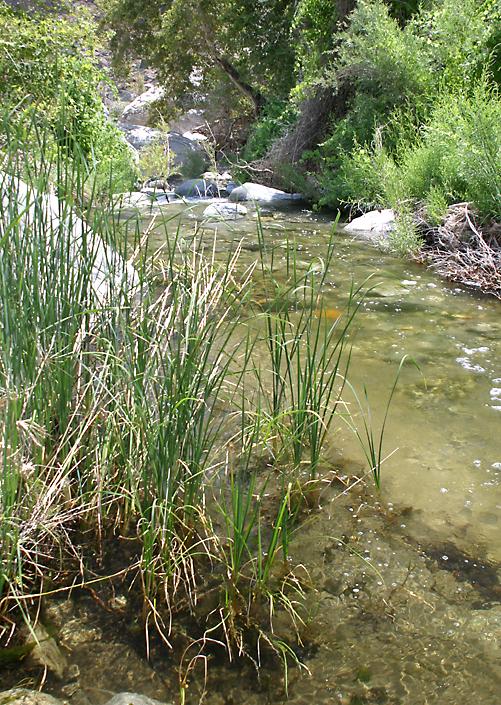
It's hard to imagine a stream flowing here throughout the incredibly hot desert summer, but availability of a constant supply of water was the reason the Cahuilla Indians settled in this area, living in the canyons during winter and going up into the mountains when the heat below became too much to bear. The stream here is fed by snowmelt from Mt San Jacinto, which at 10,800 feet is the second highest mountain in southern California. Other streams and the hot springs for which the Agua Caliente tribe is named come straight out of the desert floor, courtesy of the San Andreas fault, which passes within about 10 miles of Tahquitz Canyon. |
|
A stream in the desert is amazing, but to find a frog or tadpole is even more remarkable; nevertheless, there were quite a few of these California tree frog tadpoles in some of the quieter pools. |
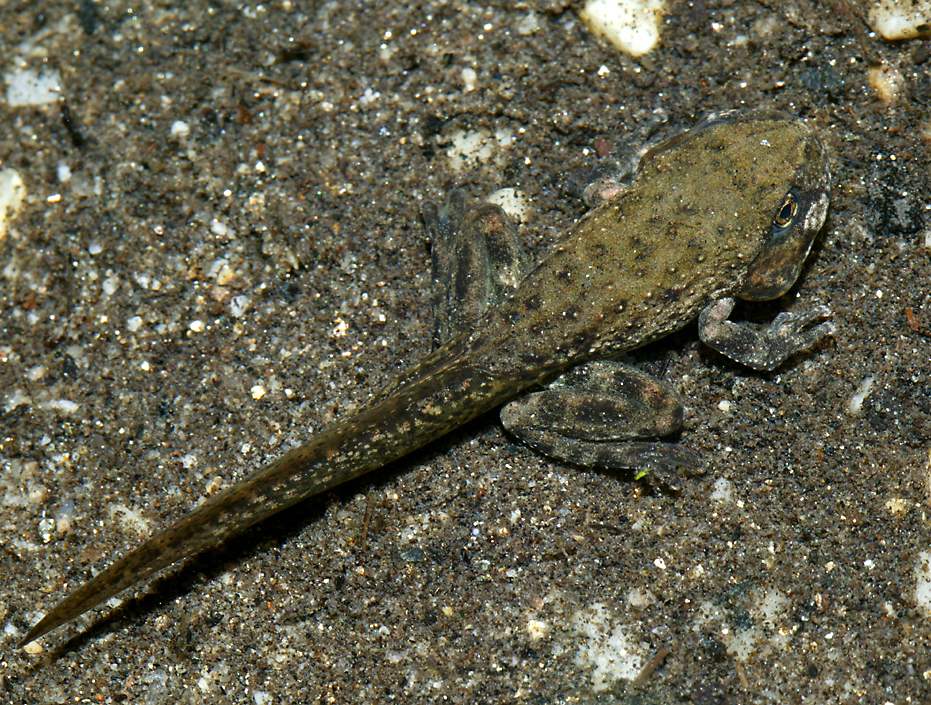
|
|
The pond skater wasn't the only predator sitting by the stream; this species of dragonfly was also quite common. |
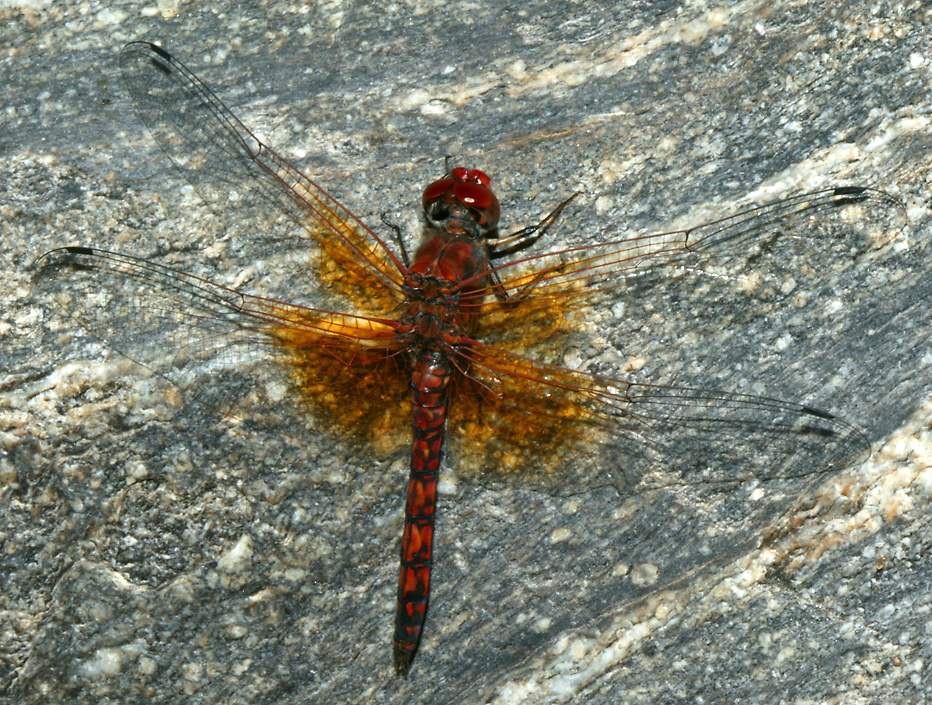 |
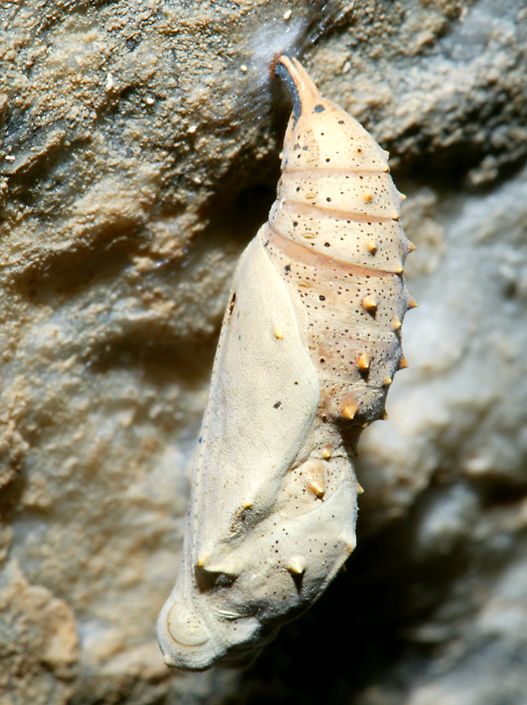
This is a tough environment for delicate creatures like butterflies and moths, but there are a few which have adapted to this environment. In springtime the desert is usually packed with caterpillars eating the wildflowers which have suddenly bloomed out of the sand. It's often possible to see dozens at once and the supply is so abundant and so reliable that some species of hawk rely on them as a fuel source while migrating back from Argentina to their breeding grounds in the United States. Many of these caterpillars will grow into moths like the white-lined sphinx moth but there are quite a few other species in the desert, like the painted lady butterfly, one of whose chrysalises I found glued to the shady side of a rock part-way up the canyon trail. |
|
The desert is home to various birds, the most famous of which might be the roadrunner - yes, folks, it's a real bird and not just a cartoon character! This is an even more common resident, a Gambel's quail. This is a male, who was standing prominently on a rock in order to distract me from his mate and their chicks, who were busy making their escape through the brush on the canyon floor. The Gambel's quail is very similar to the California quail, except that Gambel's quail is slightly larger and the feathers on the breast and back of the neck lack the dark borders of the California quail. The mountains here mark the western boundary of the range of Gambel's quail, and since their range hardly overlaps with the California quail, that's also another way to make an identification. |
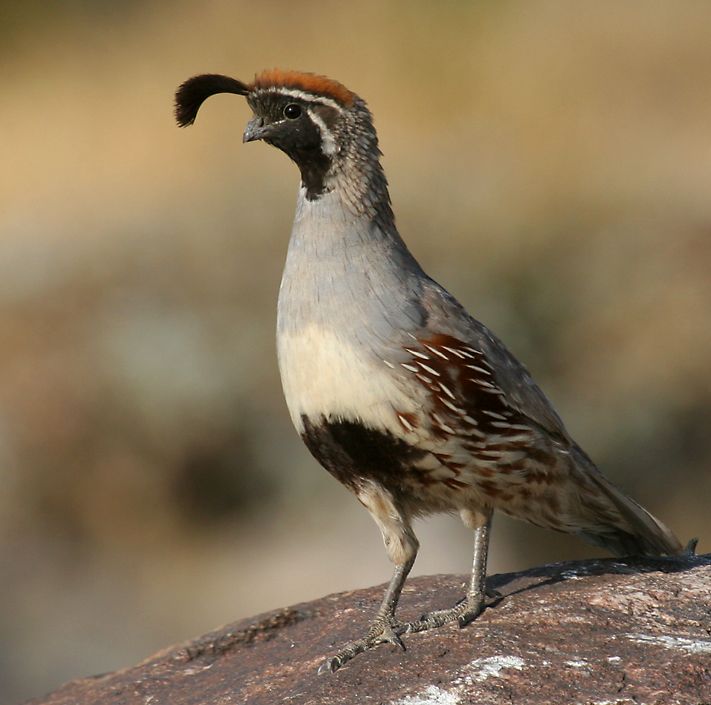 |

At the end of the canyon you come to Tahquitz Waterfall, which is about 60 feet high. Part of the 1937 Frank Capra movie "Lost Horizon" was filmed here, but you can bet it wasn't the part with snow and ice! The waterfall is the end of the line and although it might be tempting, swimming in the large pool at its base isn't permitted, so you'll just have to drive back to your home or your hotel and have a nice cold shower there! |



